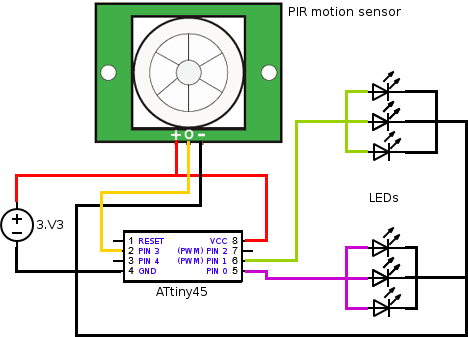I have a nice "carranca" (or wall mask) from Chile that stands in my corridor. It's a very beautiful decorative mask that I liked from the very first moment I saw it at the shop. Few weeks ago I wondered if I could bring it to life by adding a motion sensor and some lights in it, since it has three convenient holes (two for the eyes and one for the mouth) and enough space on the back for housing wires, batteries and stuff.
The circuit that I had in mind for my ATtiny has very simple: a digital signal from a PIR motion sensor would come in one pin, another pin would send a digital signal out for the lights. At the end, the only change I made was to use two different pins for the eye-lights: a PWM one for the left eye, another PWM one for the right eye. (PWM so I could fade LEDs in and out, and independently from each other).
Another thing that I had clear is that I was going to use interruptions and power-save-mode for saving me the trouble of switching/replacing battery every day.
Nowadays I'm using a small 3.7V 860mAh battery taken from an old Nokia mobile phone and it can provide enough energy to keep the system working for at least 4 months straight.
I presented this project on the Arduino Day at Campinas' Hackerspace and the material used can be seen here.











Comments